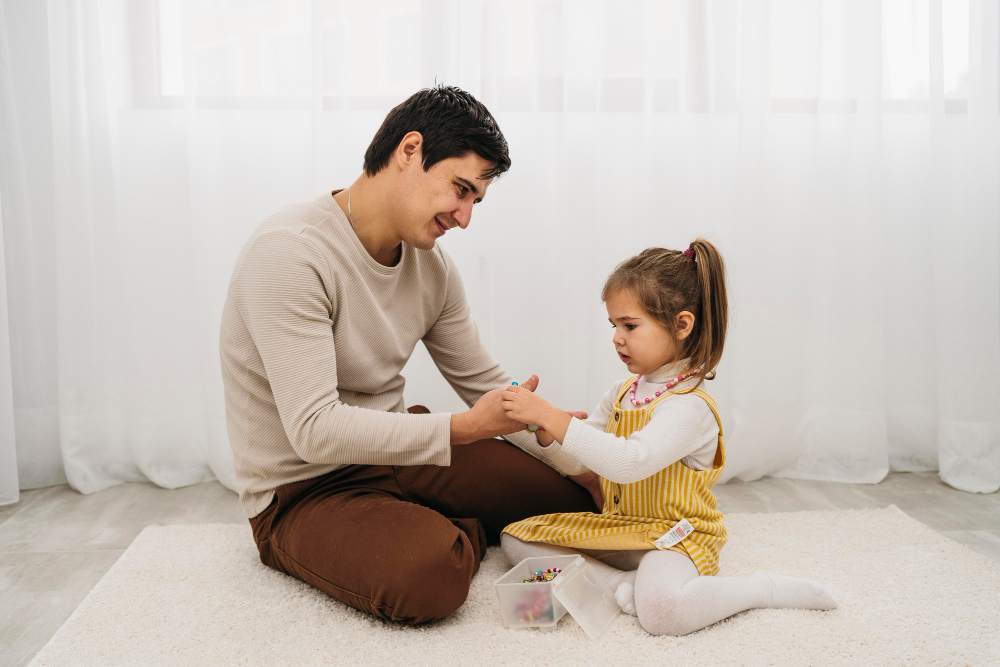Parenting is a journey filled with challenges and triumphs, especially when it comes to guiding our children towards positive behavior. For many new mothers and mothers of toddlers, the question of discipline looms large. How can we encourage good behavior without resorting to punishment? In this article, we’ll explore effective positive discipline techniques that every mother can implement to nurture a healthy and happy relationship with her child.
Understanding Positive Discipline
Positive discipline is a parenting approach that focuses on teaching children appropriate behavior rather than punishing them for misbehavior. It’s about fostering mutual respect, communication, and understanding between parent and child. Instead of using fear or coercion to control behavior, positive discipline aims to empower children to make good choices on their own.
Building a Strong Connection
One of the fundamental principles of positive discipline is building a strong connection with your child. When children feel loved, respected, and understood, they are more likely to cooperate and behave well. Spend quality time with your child, engage in activities they enjoy, and show genuine interest in their thoughts and feelings. A strong parent-child bond lays the foundation for effective discipline.
Setting Clear Expectations
Children thrive on routine and structure. Setting clear expectations and boundaries helps them understand what is expected of them. Clearly communicate your expectations in age-appropriate language and reinforce them consistently. For example, if you expect your toddler to clean up their toys before bedtime, make it a part of their nightly routine and praise them for their efforts.
Positive Reinforcement
Positive reinforcement is a powerful tool in encouraging good behavior. Rather than focusing on what your child did wrong, praise them for what they did right. Offer specific praise, such as “I noticed how you shared your toys with your friend. That was very kind of you.” Positive reinforcement boosts your child’s self-esteem and motivates them to continue behaving well.
Redirecting Behavior
Toddlers are curious explorers who often need redirection when they engage in unwanted behavior. Instead of scolding or punishing them, gently redirect their attention to a more appropriate activity. For example, if your toddler is throwing food, calmly remove the plate and offer them a toy to play with instead. Redirecting their behavior helps them learn what is acceptable in a gentle and positive way.
Time-In Instead of Time-Out
While time-out is a commonly used discipline technique, some parents prefer the concept of time-in. Time-in involves taking a break with your child to help them calm down and reflect on their behavior. Sit with your child in a quiet space and talk to them about what happened and how they can make better choices next time. Time-in promotes emotional regulation and strengthens your connection with your child.
Consistency is Key
Consistency is crucial when it comes to positive discipline. Be consistent in your expectations, boundaries, and consequences. Children thrive on predictability, and inconsistency can lead to confusion and frustration. Set clear rules and stick to them, even when it’s challenging. Consistent discipline helps children understand the consequences of their actions and encourages them to make positive choices.
Modeling Positive Behavior
Children learn by example, so it’s essential to model the behavior you want to see in your child. Show kindness, empathy, and respect in your interactions with others, including your child. When children see positive behavior modeled consistently, they are more likely to emulate it themselves. Be mindful of how you react to challenging situations and strive to respond with patience and understanding.
Conclusion
Positive discipline is not always easy, but it is incredibly effective in fostering a strong parent-child relationship and encouraging good behavior. By building a connection with your child, setting clear expectations, using positive reinforcement, redirecting behavior, and modeling positive behavior yourself, you can guide your child towards becoming a respectful and responsible individual. Embrace the journey of positive discipline, and watch as your child flourishes with love and guidance.
Related Tags:
Positive discipline, encouraging good behavior, child discipline techniques, no punishment discipline, parenting tips, positive reinforcement, child behavior, discipline strategies, effective parenting, non-punitive discipline, parenting skills, building connections with children, time-in strategy, consistent discipline, modeling behavior, respectful parenting, child development, positive parenting, setting expectations, redirecting behavior.


